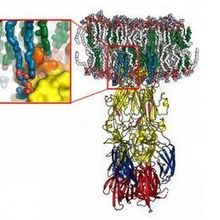Login
Subscribezoonotic diseases

Q&A: Minks Can Transmit SARS-CoV-2 to Humans, Study Shows
Max Kozlov | Nov 13, 2020 | 4 min read
Whole genome sequencing of the virus infecting the farm animals showed that it spread from the workers to the mink and back, indicating that an animal could serve as a viral reservoir.

Denmark to Cull 17 Million Mink Amid SARS-CoV-2 Mutation Concerns
Lisa Winter | Nov 5, 2020 | 2 min read
Government authorities say because the animals are good hosts of the novel coronavirus, and this new viral variant could undermine vaccine efforts against COVID-19, they are destroying the nation's entire stock of mink.

Disrupted Habitats Have More Zoonotic Disease Hosts: Study
Lisa Winter | Aug 6, 2020 | 2 min read
Animals that can host pathogens dangerous to humans, such as rodents, birds, and bats, are proportionately more common in human-occupied spaces than in remote areas.

Which Species Transmit COVID-19 to Humans? We’re Still Not Sure.
Claire Jarvis | Mar 16, 2020 | 3 min read
Preliminary modeling studies provide a shortlist of potential coronavirus intermediate host species.

Cause of Viral Pneumonia Outbreak in China Unknown
Catherine Offord | Jan 6, 2020 | 2 min read
Health authorities have ruled out the usual suspects, leading to fears that a novel virus is causing the infections in Hubei Province.

Zoonotic Disease Research Program Shut Down
Emily Makowski | Oct 28, 2019 | 2 min read
The USAID’s Predict program, which conducted animal virus surveillance and disease outbreak prevention training, is ending after its 10-year funding run.

Isolated Ebola Cases Hard to Diagnose, Go Undetected
Munyaradzi Makoni | Jun 18, 2019 | 2 min read
Wide availability of infection control and diagnostic resources is required to control outbreaks early.

Deforestation Tied to Changes in Disease Dynamics
Katarina Zimmer | Jan 29, 2019 | 8 min read
Numerous studies link habitat destruction to malaria and other vector-borne diseases, but the relationship isn’t always clear.

New Species of Ebola Discovered
Catherine Offord | Jul 30, 2018 | 2 min read
The Bombali Ebola virus was identified in bats in Sierra Leone, and there’s no evidence that it has infected people or causes human disease.

Why Bats Make Such Good Viral Hosts
Katarina Zimmer | Jun 1, 2018 | 4 min read
The bat version of the STING protein helps dampen the mammals' immune response to infection, researchers have found.

Predicting Future Zoonotic Disease Outbreaks
Ashley Yeager | Jun 1, 2018 | 10+ min read
A step-by-step study of diseases that jump species gives subtle clues about future epidemics.

Infographic: Researchers Aim to Predict How Pathogens Jump Species
Ashley Yeager | May 31, 2018 | 2 min read
Understanding the factors that influence spillover could help forecast future epidemics.

Image of the Day: Membrane Fever
The Scientist and The Scientist Staff | Nov 17, 2017 | 1 min read
Scientists have discovered a mechanism by which the Rift Valley fever virus infects the cells of its hosts.

Mapping Zoonotic Disease
Jef Akst | Jun 14, 2016 | 2 min read
Researchers aim to predict new infectious disease outbreaks that spread from animals to humans.

Novel Hantavirus Infection Method
Bob Grant | Jul 3, 2015 | 1 min read
Researchers find that the potentially deadly virus uses cholesterol to gain access to cells.

The Lies That Scars Tell
Kerry Grens | Jul 1, 2015 | 4 min read
Macaque trainers in Bangladesh are often bitten by their monkeys, but rarely infected by a particular simian retrovirus.

Model Predicts Zoonotic Hot Spots
Kerry Grens | May 19, 2015 | 1 min read
The midwestern U.S. and central Asia are at high risk for new disease outbreaks from pathogen-bearing rodents, according to a study.

Taming Bushmeat
Jyoti Madhusoodanan | Jan 1, 2015 | 4 min read
Chinese farmers’ efforts at rearing wild animals may benefit conservation and reduce human health risks.

Camels are MERS Reservoirs
Bob Grant | Nov 9, 2014 | 2 min read
Researchers have concluded that these animals, known as the “ships of the desert,” can ferry the deadly coronavirus, perhaps infecting people.
